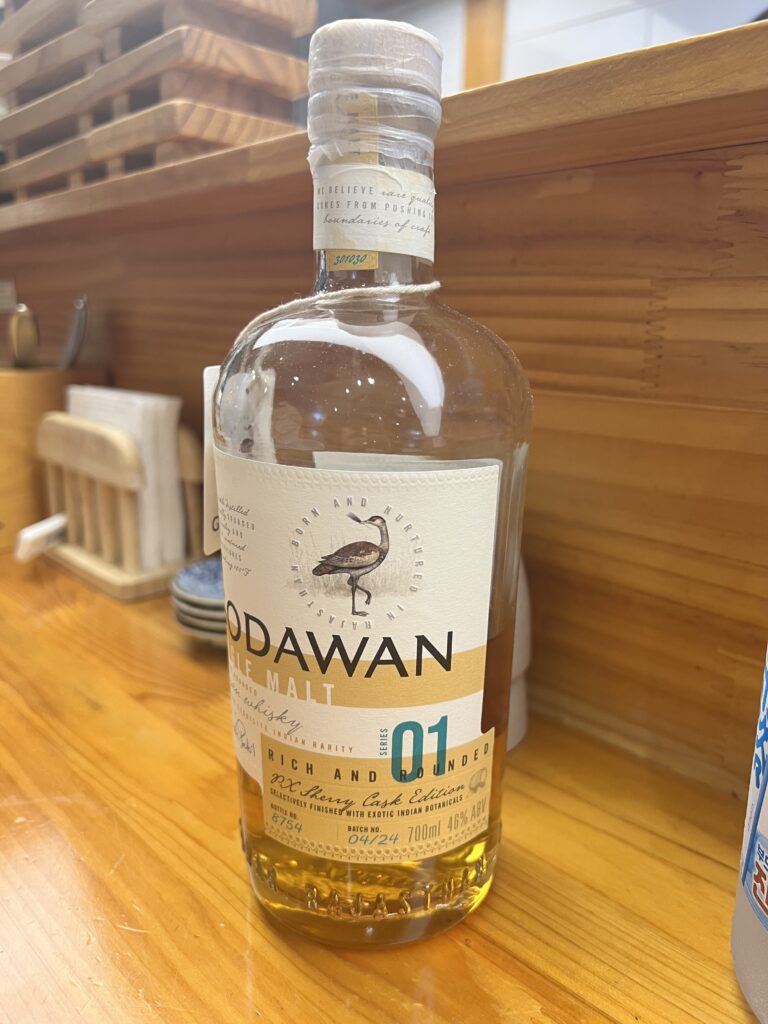
Short Story
“Hey, check this out – let’s drink this together!” This unexpected text came from a friend traveling in India. He sent a photo of a whisky I’d never seen before – Godawan. The name meant nothing to me at first, but it sparked my curiosity. Indian whisky? Right, I’d been hearing buzz about Indian whisky lately.

A bit of research revealed an interesting story. Godawan is produced by Diageo India, and they didn’t just create another whisky – they built a brand with purpose. The whisky is named after the Great Indian Bustard, an endangered bird from Rajasthan, with part of their profits going toward conservation efforts.
The technical details are intriguing. Like many Asian whiskeys dealing with hot climates, it’s an NAS (Non-Age Statement) product. However, they’ve put serious thought into the production: sherry cask maturation followed by a bourbon cask finish, locally sourced six-row malted barley, and an unusual final aging in bourbon casks infused with herbs. That last part especially caught my attention – it’s not something you see every day in whisky making.
My experience with Indian whisky was limited to Amrut, so I was excited to try something new. The opportunity came with an unlikely pairing – sushi – but sometimes the best tastings happen spontaneously.
The whisky presents an interesting profile: cinnamon, cloves, and rich fruit notes on the nose. What surprised me was the contrast between nose and palate. While the aroma suggests sweetness, the taste delivers a distinctive saltiness that’s quite unexpected. Just when you think you’ve figured it out, it leaves you with a lingering sweet finish.
“This is actually really good” was my first thought. The uniqueness of it made it even more appealing. Those mystery herbs they added? They definitely contribute to a profile unlike any traditional whisky I’ve tried. It’s the kind of taste that makes you understand why experienced whisky tasters emphasize the importance of having a broad culinary background.
Sure, I could have been more methodical – maybe added some sparkling water to open up the flavors – but sometimes you just want to enjoy good whisky with good food. And that’s exactly what I did.
Final Verdict
This is seriously impressive stuff. The recent buzz about Indian whisky makes a lot more sense now. It’s fascinating to see how far they’ve come – I remember being surprised by the number of Indian whiskies I saw during a layover in India about a decade ago. Now they’re producing whisky that can compete on the world stage. After Japan and Taiwan’s success in the whisky world, India seems poised to be Asia’s next whisky powerhouse.
In a world where whisky traditions run deep, it’s exciting to see new regions bringing fresh perspectives to the spirit. Experiences like this makes me keep seaching for new whisky.

